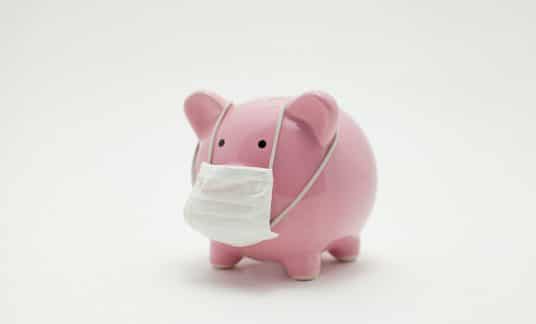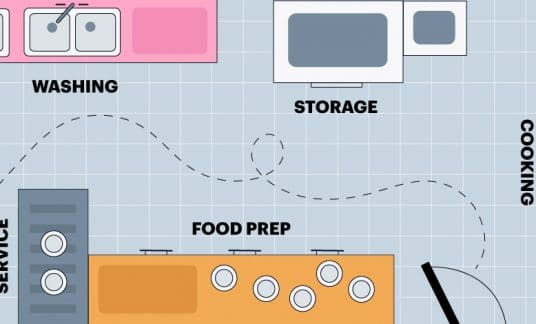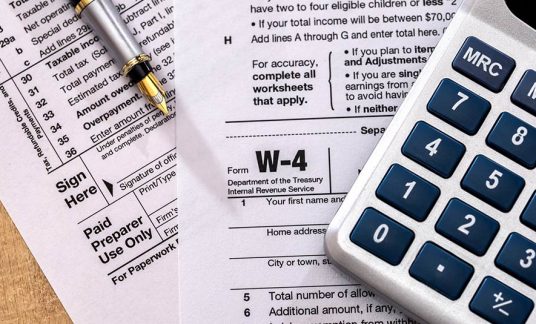Operating a restaurant is always a juggling act. From running the floor to stepping up to the grill, you’re constantly exchanging one hat for another.
However, COVID-19 threw another wrench in that delicate balance, making it more difficult to earn a living while keeping people safe. Although the coming months won’t be easy, consider these restaurant guidelines to keep your business open.
Restaurant Rules and Regulations
Operating during the pandemic is a challenge fraught with new tribulations. Unfortunately, it’s impossible to eliminate all risks. You can keep your staff and customers safe by understanding how hazards vary for different types of service.
According to the Centers for Disease Control (CDC), threat levels differ according to contact proximity, mask use and indoor versus outdoor dining. Risk levels include:
- Low: Curbside, take-out, delivery and drive-through options present the lowest risks because of less contact between individuals.
- Medium: Offering outdoor dining options with reduced seating capacity, allowing for 6-feet of social distancing space poses more risk.
- High: Interior dining options that keep tables 6-feet apart and limit the total number of people in the building.
Threat levels also vary according to the positivity rate in your community, with numbers higher than 5% indicating more community spread, meaning there’s an increased risk of asymptomatic diners eating out.
The highest risk stems from doing nothing, such as not reducing capacity or spacing tables 6-feet apart.
How to Find COVID Guidelines for Restaurants
The food sanitation rules require someone at your restaurant to know and apply the regulations, and that’s not always easy during a pandemic.
As with many new things, COVID recommendations change as we learn more information about the virus. While you can’t predict how the pandemic will affect your area in the upcoming months, you can follow CDC guidelines for restaurants and listen to local leaders.
The health department, city and state offer resources specific to your area and restaurants. Furthermore, your business requires several licenses to operate, so look to these agencies for information about restaurant restrictions.
Help your customers and staff stay safe and informed by using free resources from:
- CDC: The CDC guides restaurant and bar operators. You’ll also find free templates, signs and checklists.
- Occupational Safety and Health Administration (OSHA): Learn about best practices and the most frequently cited violations relating to coronavirus by visiting OSHA.
- U.S. Food and Drug Administration (FDA): Explore guides like the food safety reopening checklist from the FDA to ensure you’re following the latest recommendations.

Restaurant Guidelines: Best Practices
Although reopening instructions vary by city and state, restaurant owners aim to protect their customers, employees and business.
However, you’ve likely had to come up with new policies relating to not only sanitation but sick leave.
To operate successfully and safely, business owners must take a comprehensive approach that includes minimizing the impact of COVID-19 while helping people adjust.
Convey New Restaurant Policies
Let guests and employees know how your policies have changed during COVID. You can post CDC signs on your doors and give employees handbook addendums.
To protect your business, set specific policies that you, management, staff and customers will follow. Define those policies, not only what you’re doing, but why and who it affects.
Next, determine how you’ll hold employees accountable and how you’ll approach customer issues. Provide guidance for staff so they understand your safety expectations. Plus, have your team sign-off on handbook updates.
Apply Restaurant Guidelines Consistently
The worst thing you can do is be wishy-washy or treat people differently, leading to employment disputes.
Instead, make your policies clear and known, with training available to assist with meeting new guidelines and procedures.
The same goes for guests. Don’t be the restaurant going viral on social media because you gave special treatment to one group or another.
Stick by the guidelines you set and you’ll earn the trust of guests and staff.
Encourage Employees to Follow Policies
Restaurant businesses with a strong teamwork culture have crews that realize how one employee’s actions affect everyone else.
Indeed, your restaurant crew wants to stay safe, but they need an income, meaning some may ignore your policies and show up to work when they shouldn’t. Here are a few things to remember:
- Enforce policies but demonstrate empathy by talking to the staff personally and asking how you can help them follow the rules.
- Model desired behavior in and outside of your restaurant by following the same policies you create for staff and guests.
- Meet frequently with management to assess staff sentiment, ensure policy consistency and adjust approaches as needed.
- Tie the idea of earning an income to preventing illness, as fewer risks mean you can stay open and employees can earn wages.
- Offer support with an open-door policy that encourages your workers to reach out with work or personal concerns or problems.
- Provide templates for responding to challenging customers or situations related to the pandemic and give checklists for updated workflows.
Help Customers Adjust to Changes
We’re all in this together, and people in your community want to help local businesses. Yet, your customers also are struggling with the changes.
No doubt you’ve already had your fair share of run-ins with guests upset about restaurant restrictions. You’ve also seen people step up to support small businesses in every way possible, from buying gift cards to ordering curbside delivery.
As with many industries, you’ll never please everybody. But here’s the thing: Some of those people may not be your ideal guests and no matter how hard you try to make their visit pleasant, they won’t be happy.
For the others, take a personal approach as much as possible. After all, some people may forget their masks on the way to the bathroom, and that’s okay. Any staff member can discreetly hand a guest a clean mask without drawing attention.
Others may be more vocal, making your management’s presence vital. Encourage management to be extra vigilant to prevent disruptions and handle angry customers.
Provide Restaurant Reopening Updates
Throughout the pandemic, one thing every business has learned is the importance of communications. When changes transpire at your restaurant, your guests want to know before they get their hearts set on something that isn’t available.
Deliver excellent customer experiences with frequent communication, such as:
- Add a status update via a pop-up on your restaurant website
- Refresh social media bios and profile pages with your status
- Update your business hours on your Google Business listing
- Pin a post about your reopening status on your Facebook business page or Twitter profile
Develop Checklists and Training Templates
Once you’ve reopened your doors, your restaurant floor plan may look different. Update your point-of-sale (POS) system to reflect changes to seating. Then, give your training and sanitation guidelines a once over, and ask your staff to do the same.
You may need to revise clock-in procedures, adopt new cleaning protocols or increase side work for various positions. Keep your training and workflows straightforward and engaging using:
- Short videos of you or a manager performing the cleaning method
- Infographics with lists of 3 to 5 steps for a side job
- Pop up reminders on your POS system
- Inventory lists of pandemic-related items like hand sanitizer or masks

Budgeting Amid Restaurant Restrictions
Let’s face it: For most restaurants, surviving the COVID winter isn’t about profit. It’s about survival and endurance — for you, your staff and your finances.
You ran on slim profit margins before the pandemic, and it hasn’t gotten easier. As with any cash-flow problem, you must increase sales while decreasing expenses.
Increase Your Restaurant Sales
You can bolster sales by selling your food, beverages and gift cards. But you aren’t limited by your location. With a digital presence, you can market any number of products or services online.
Depending on your target market, service model and capabilities, you may:
- Offer curbside pickup services
- Provide contactless payment methods
- Deliver via a third-party or in-house drivers
- Sell family-size meals and portions
- Promote ready-to-heat meals or meal kits
- Give a $10 gift card with every $50 gift card purchase
Increase Cash Flow
Restaurant loans and financing may help you weather the season. Or we may see more support from programs such as the Paycheck Protection Program (PPP) or Economic Injury Disaster Loan (EIDL).
Various agencies may offer assistance in the upcoming months, such as:
- National Restaurant Association Grants: In 2020, the National Restaurant Association helped more than 43,000 people through its Restaurant Employee Relief Fund (RERF).
- Local and community support: Loans and grants from local city and county governments covered payroll or utility bills for small businesses across the country.
- Small Business Association: Learn about temporary programs or emergency assistance by watching the SBA website for updates.
Reduce Restaurant Expenses
Although you’ve already tightened your belt, review other ways to trim your budget. Consider:
- Promoting high-profit dishes more frequently
- Paring down your menu to reduce inventory
- Auditing food and paper supply costs
- Exploring free marketing ideas
- Negotiating new terms with suppliers
- Using automation to save on energy costs
Stay Connected With Restaurant Customers
Your guests want to hear from you. Go live on social media to show your staff safely prepping to-go orders. Or share a story about how you came to know and love the community of people you serve.
While it won’t be easy to survive this winter, you can dig in and be the best at what you offer while appealing to the emotional side of your guests.










